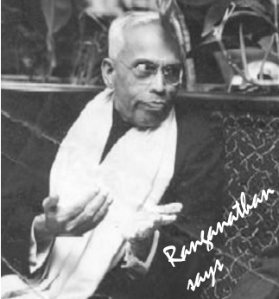 Ramkrishna Paramahamsa had said that he was eager to express to his friends that profound experience in his deep Samadhi state (usually translated as trance-state) which brought him supreme delight. But he remarked that, as he reached towards that state, the differentiated manifestations of the phenomenal world gradually shed their differences, and reduced themselves to fewer and fewer patterns, that when the number of patterns fell below a certain number they were so unfamiliar to the ordinary folk that the natural language, which alone was intelligible to them, had not thrown forth any term to denote them and that ultimately, when the pattern was about to be reduced to a single one, his own identity also was lost in the one; with the result, when he recovered from that depth, he could say nothing, in words intelligible to us, of experiences below a certain depth. The Vedas declare this in the well-known passage:
Ramkrishna Paramahamsa had said that he was eager to express to his friends that profound experience in his deep Samadhi state (usually translated as trance-state) which brought him supreme delight. But he remarked that, as he reached towards that state, the differentiated manifestations of the phenomenal world gradually shed their differences, and reduced themselves to fewer and fewer patterns, that when the number of patterns fell below a certain number they were so unfamiliar to the ordinary folk that the natural language, which alone was intelligible to them, had not thrown forth any term to denote them and that ultimately, when the pattern was about to be reduced to a single one, his own identity also was lost in the one; with the result, when he recovered from that depth, he could say nothing, in words intelligible to us, of experiences below a certain depth. The Vedas declare this in the well-known passage:
“Unable to reach which, the words return along with Manas”.
Manas is that part of the mind which acts as a channel between Chitta (= memory) which is the store of impressions and experiences on the one side and Buddhi (= intellect) which develops the impressions and experiences by permutations and combinations and creates new impressions and experiences of its own. Production of articulate sounds, words and intelligible language, and other symbols, is one of them. As a transmission wire breaks down when the voltage increases beyond a certain measure, the Manas, which is like transmission wire between Chitta and Buddhi, is overpowered when the intensity of what is poured into Chitta increases beyond measure during deep experiences and samadhi.
S.R. Ranganathan, Philosophy of Library Classification, 1951, p. 69.


